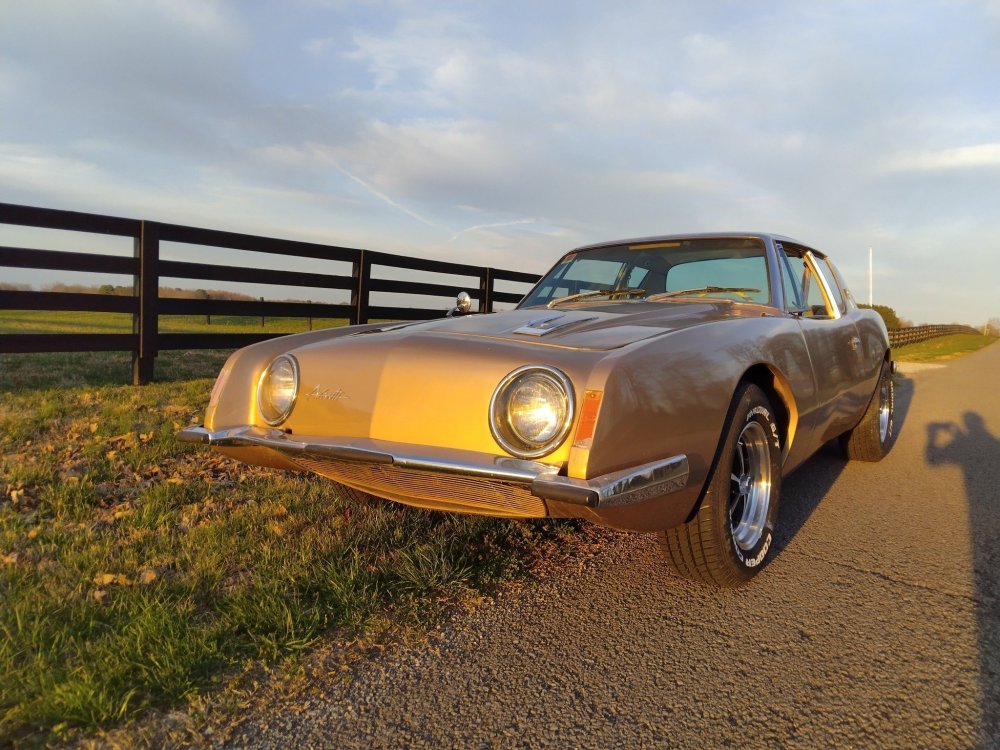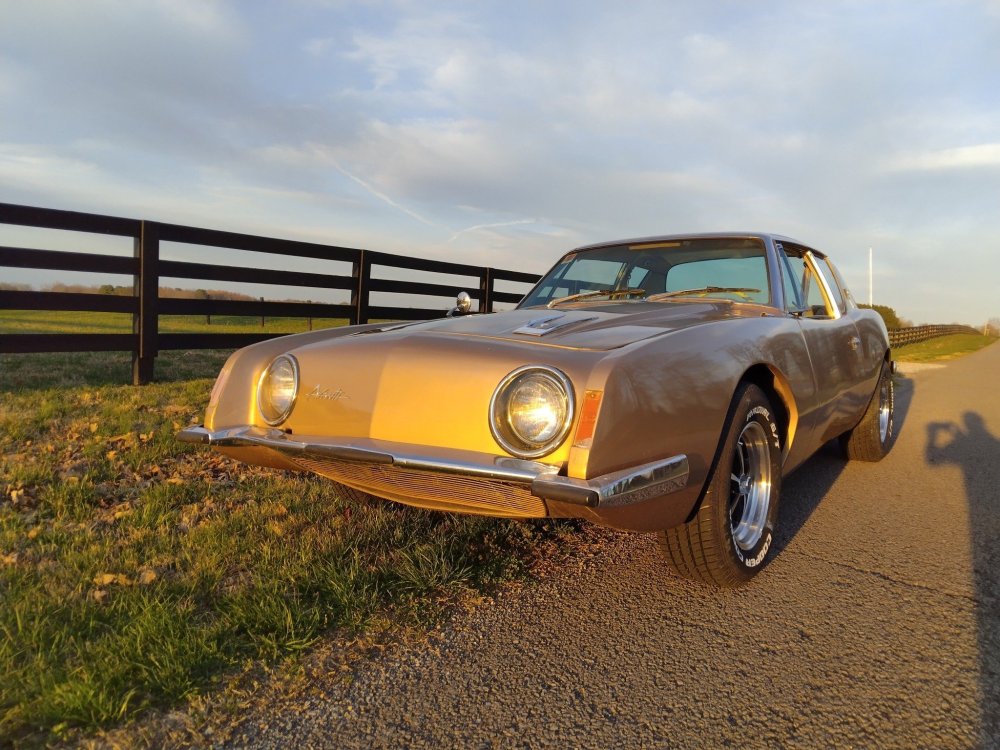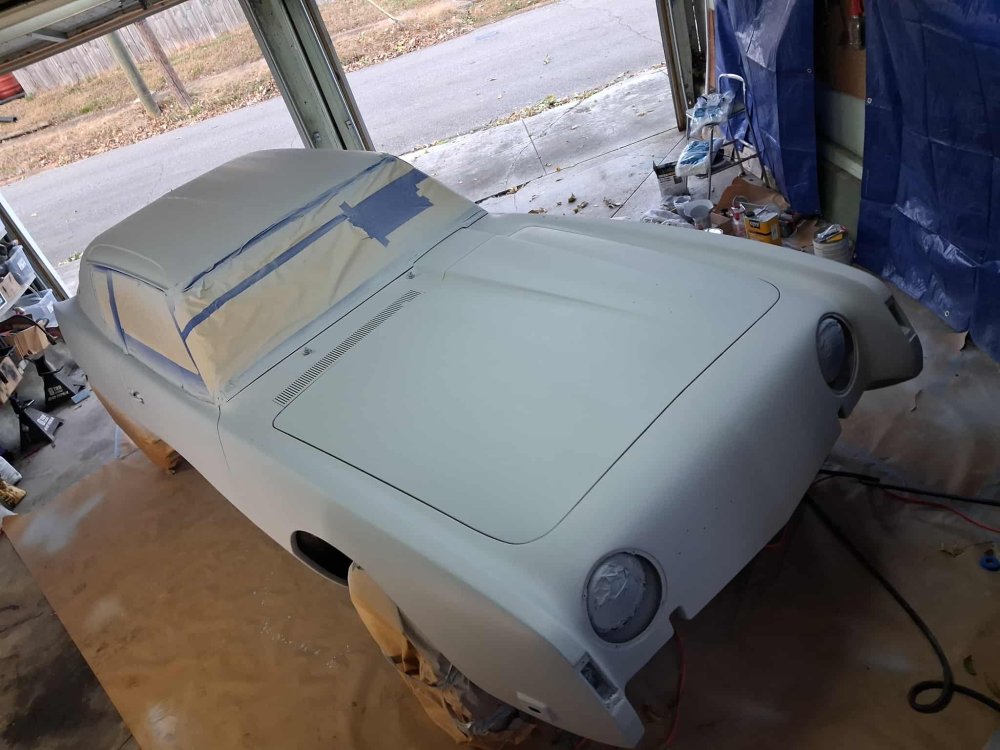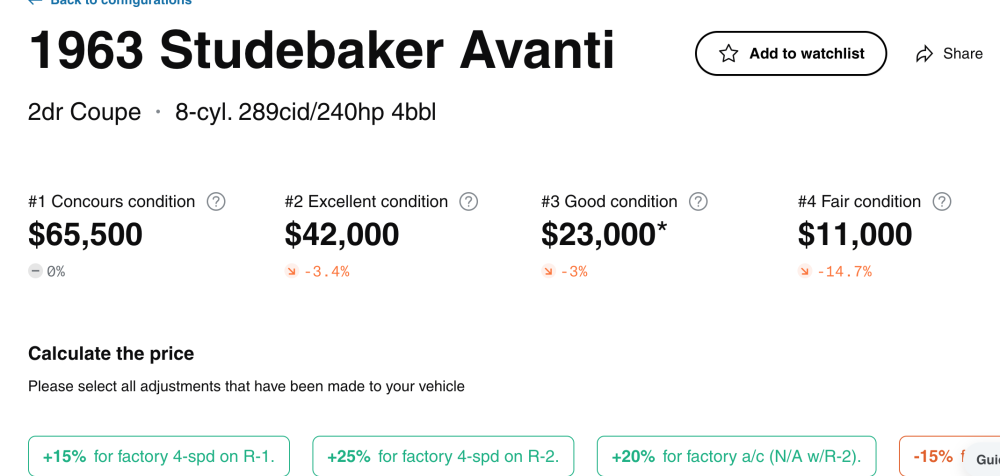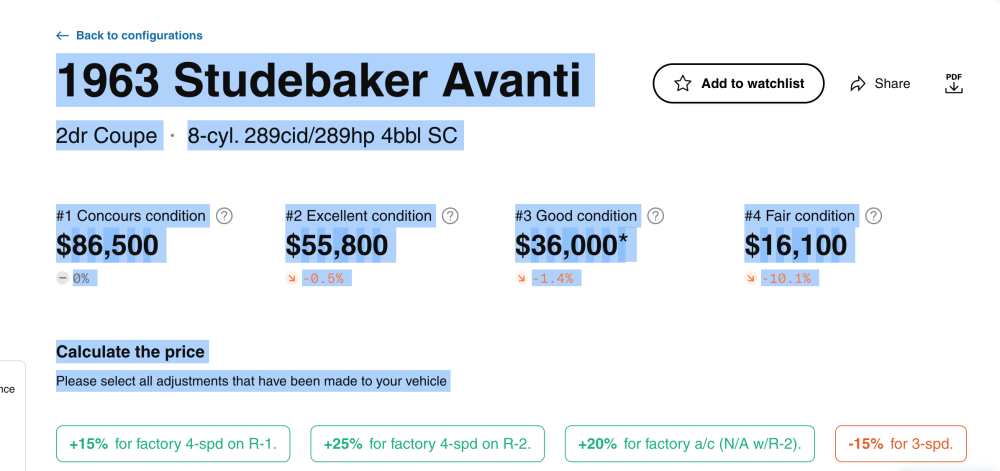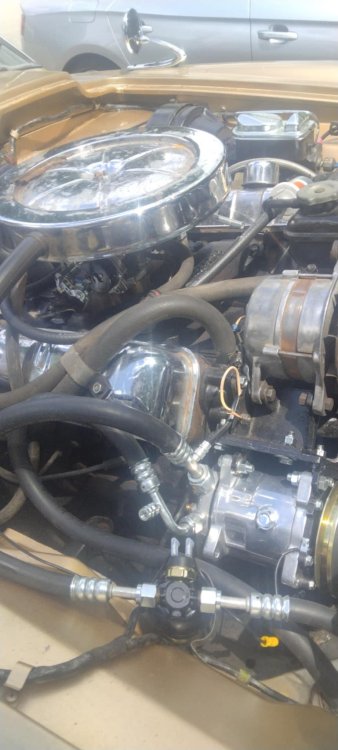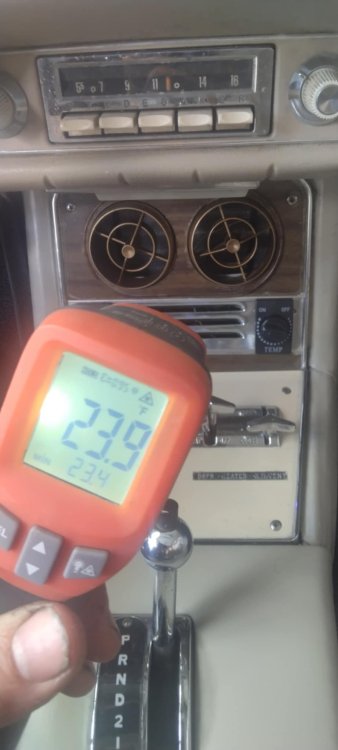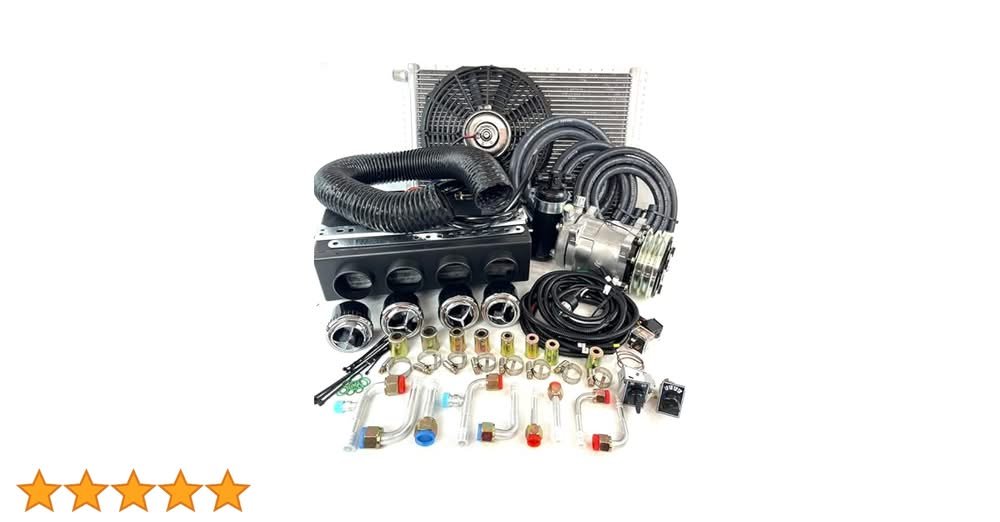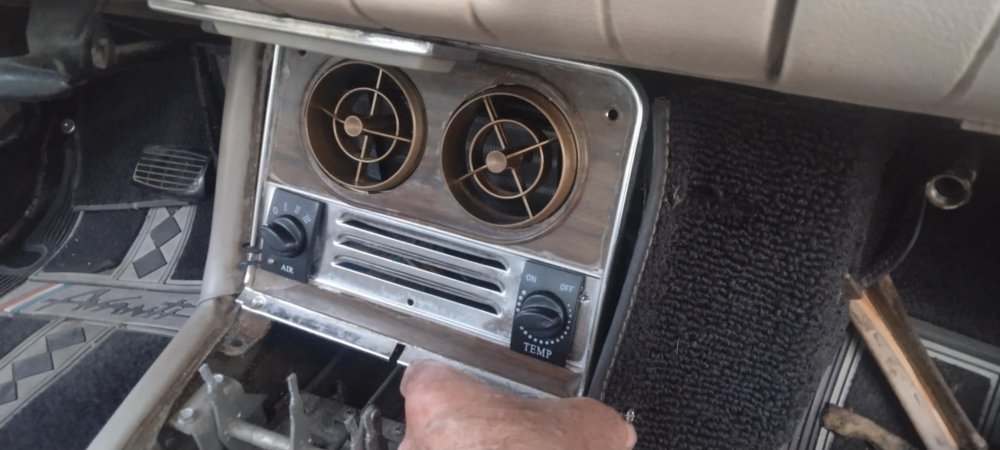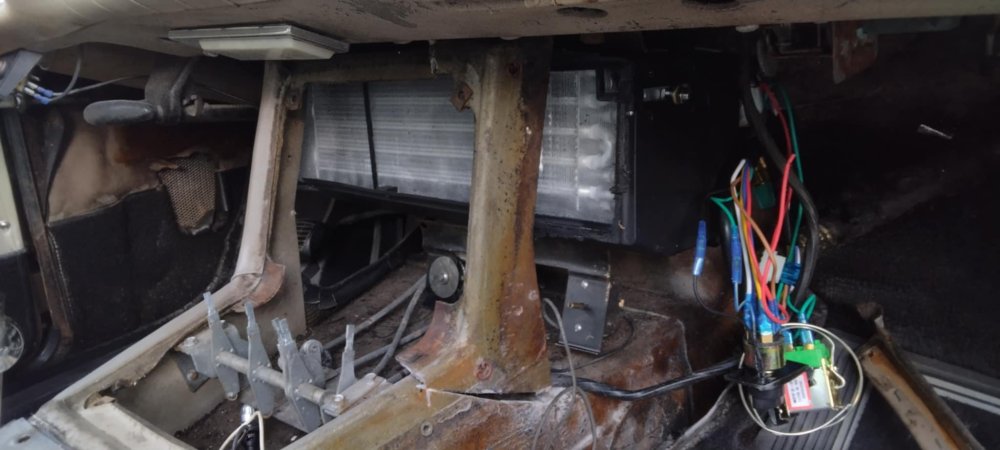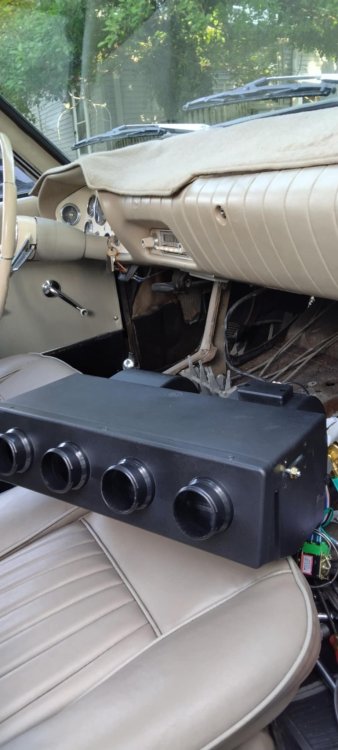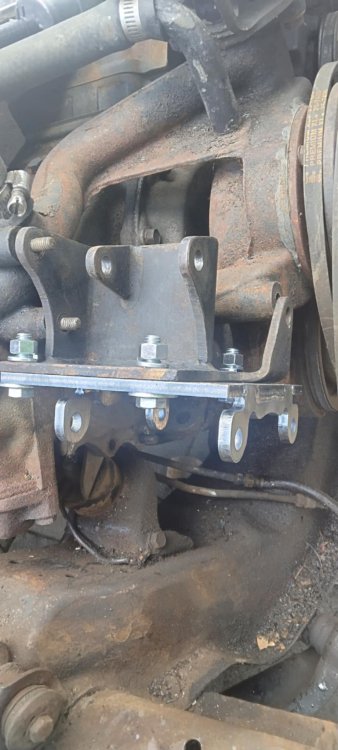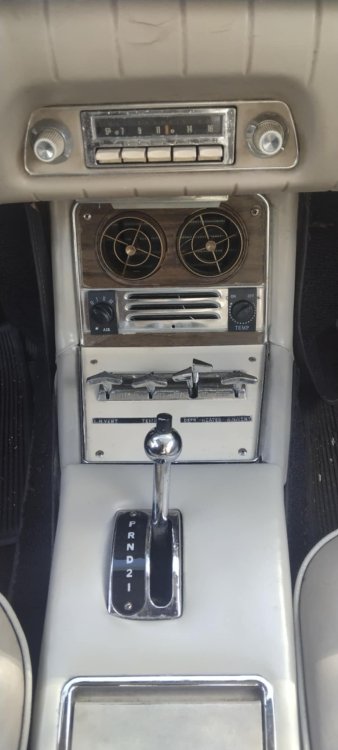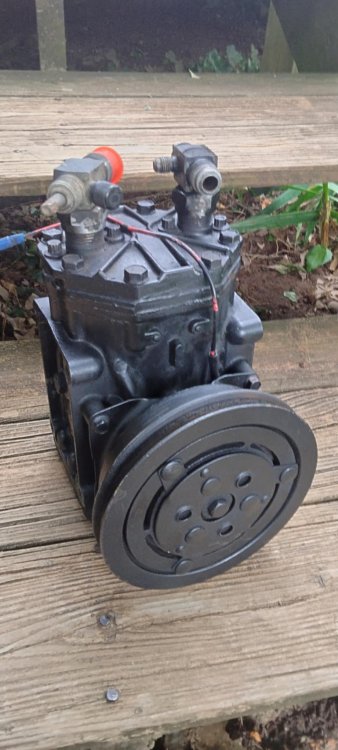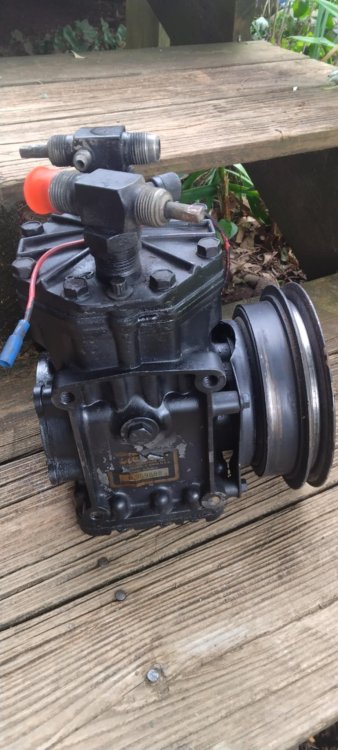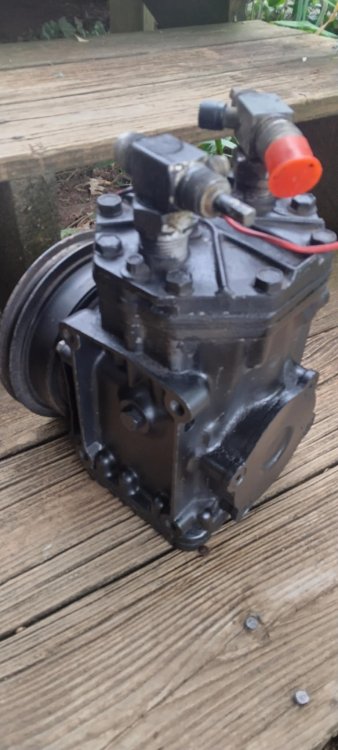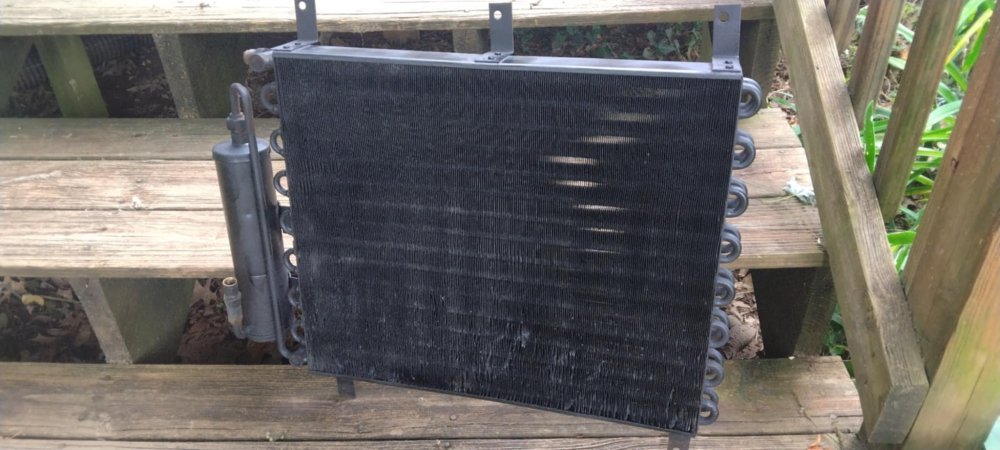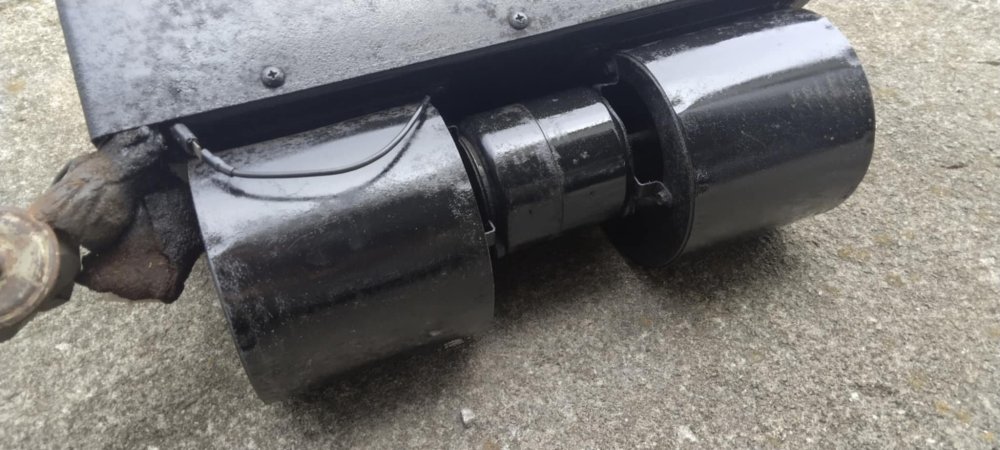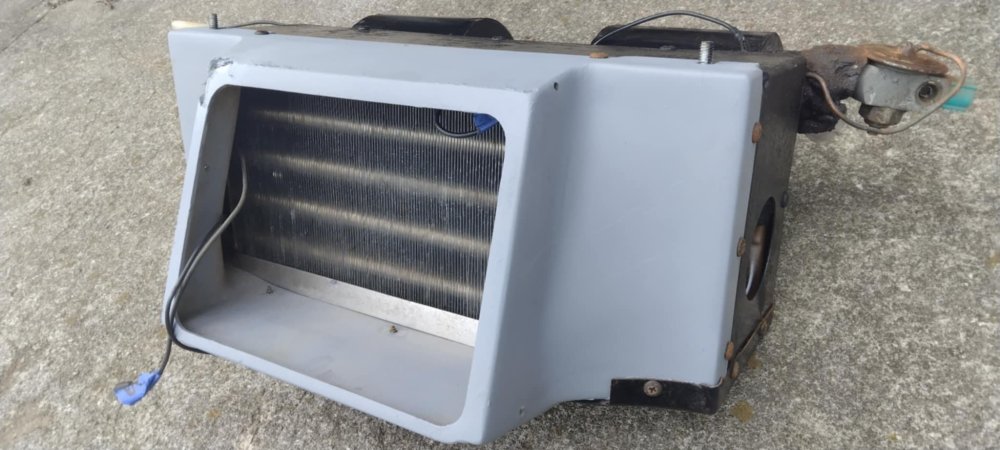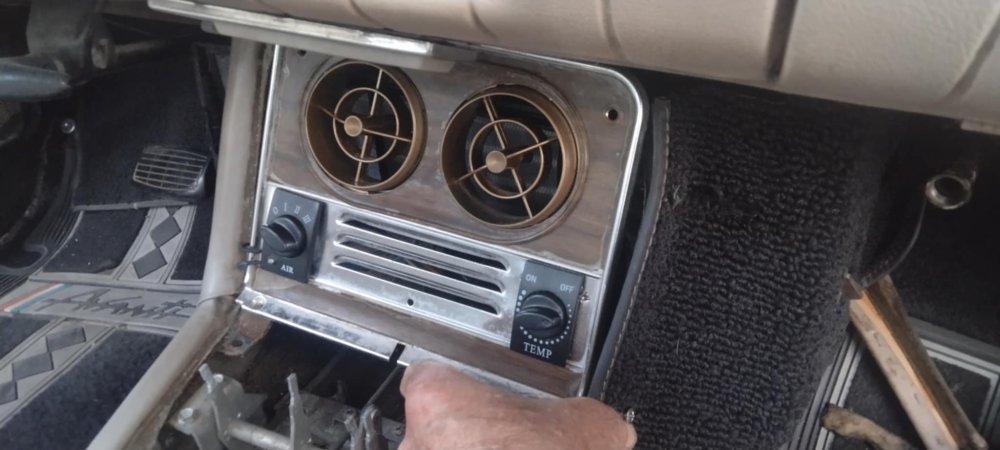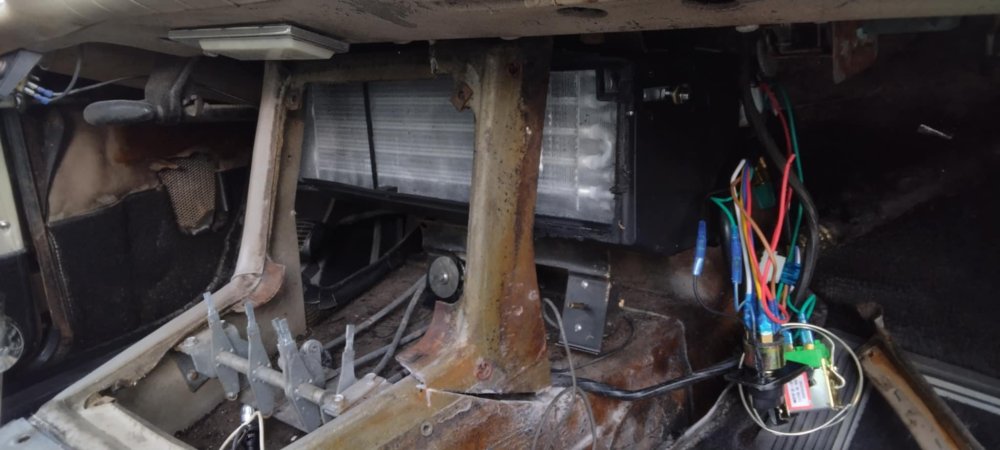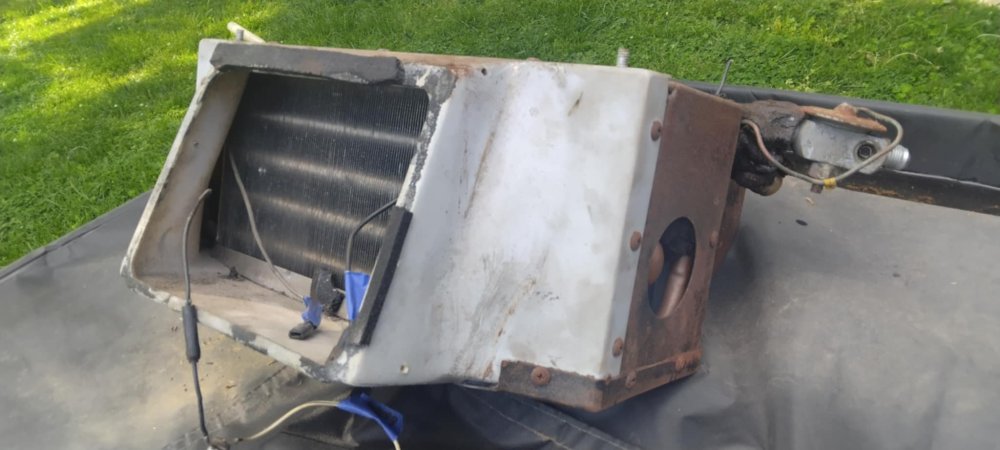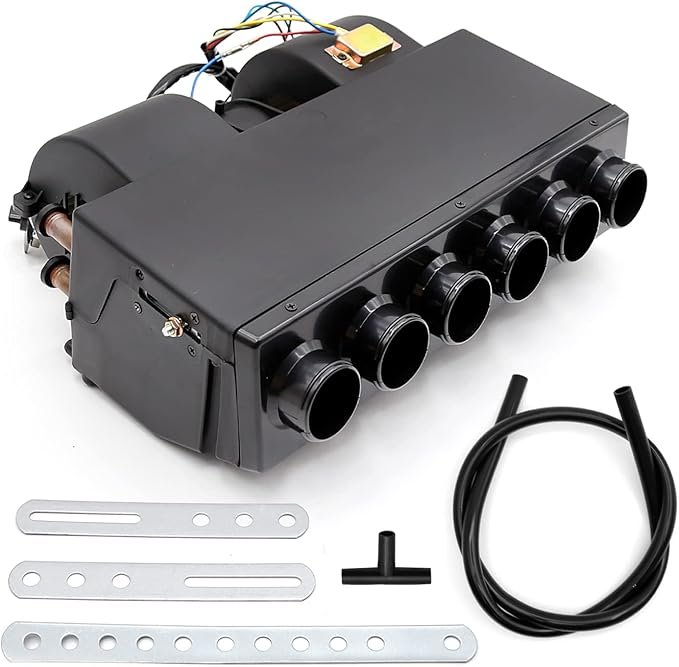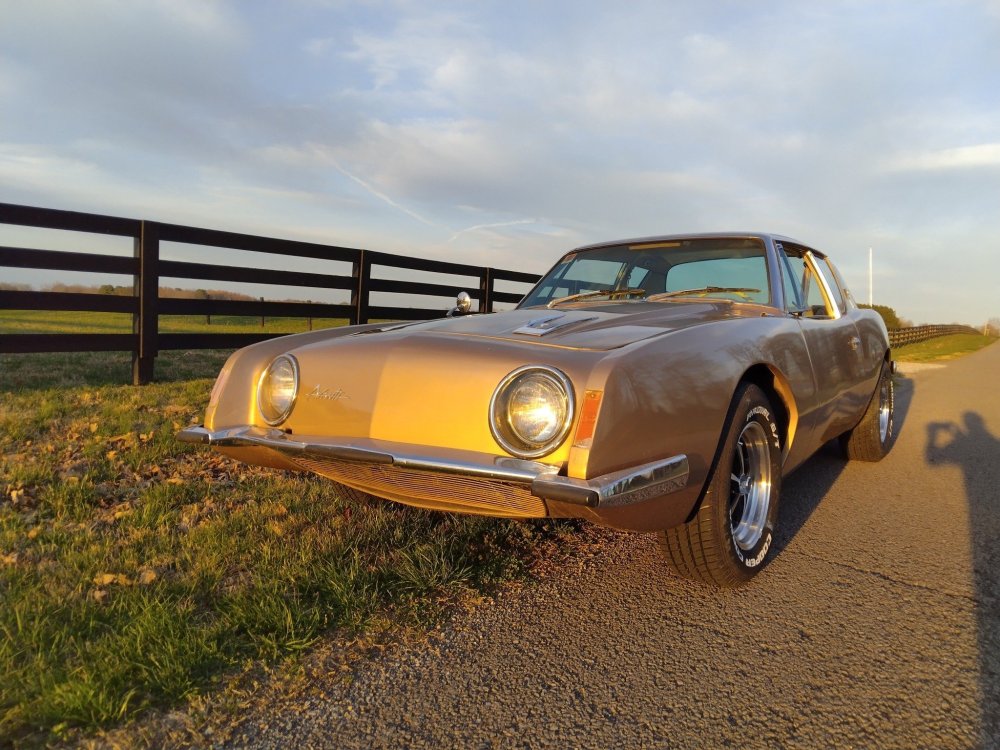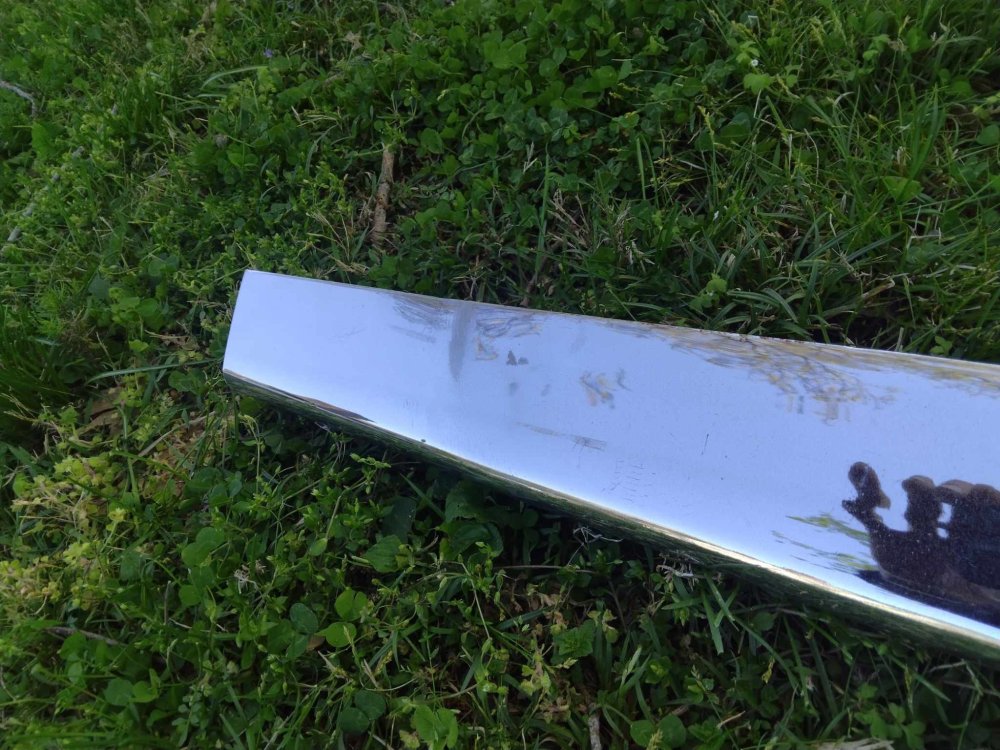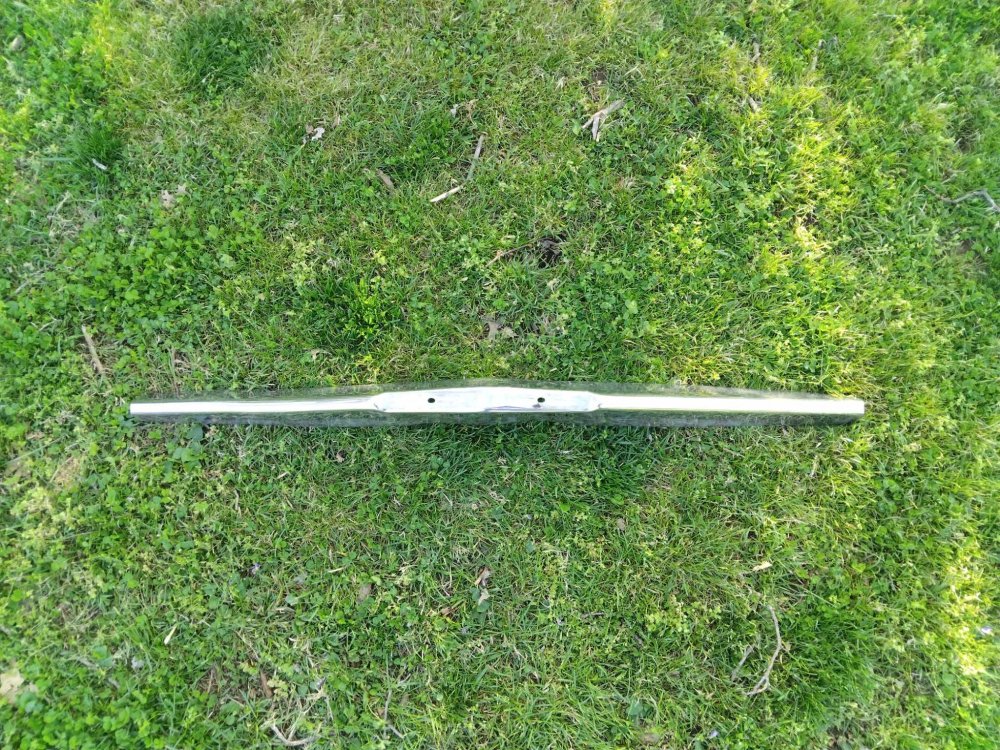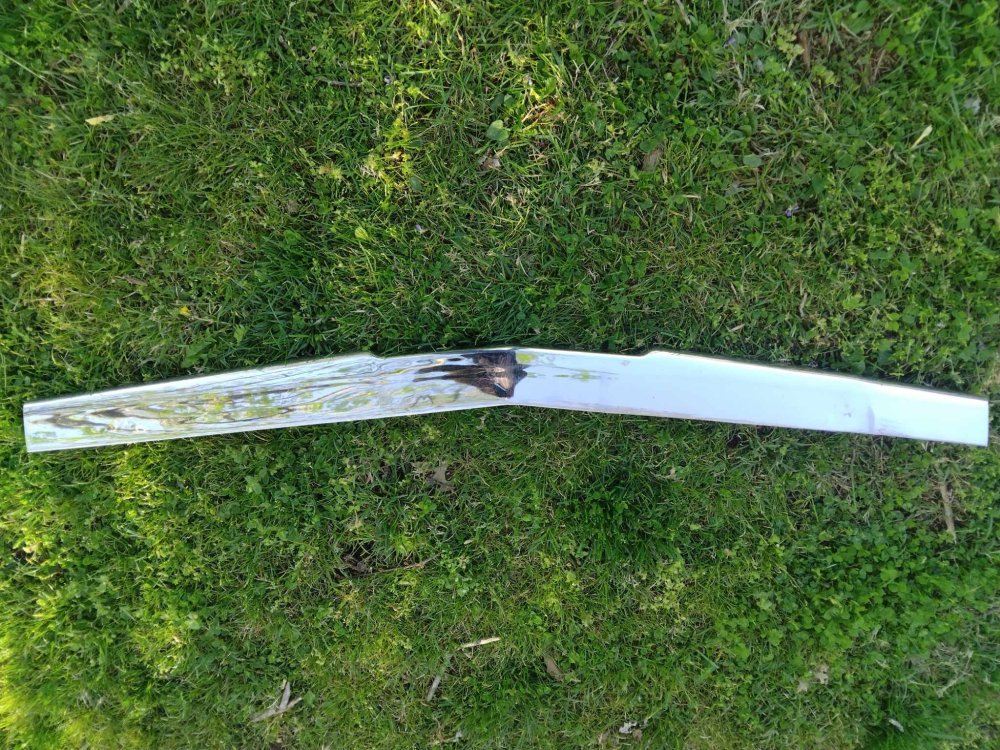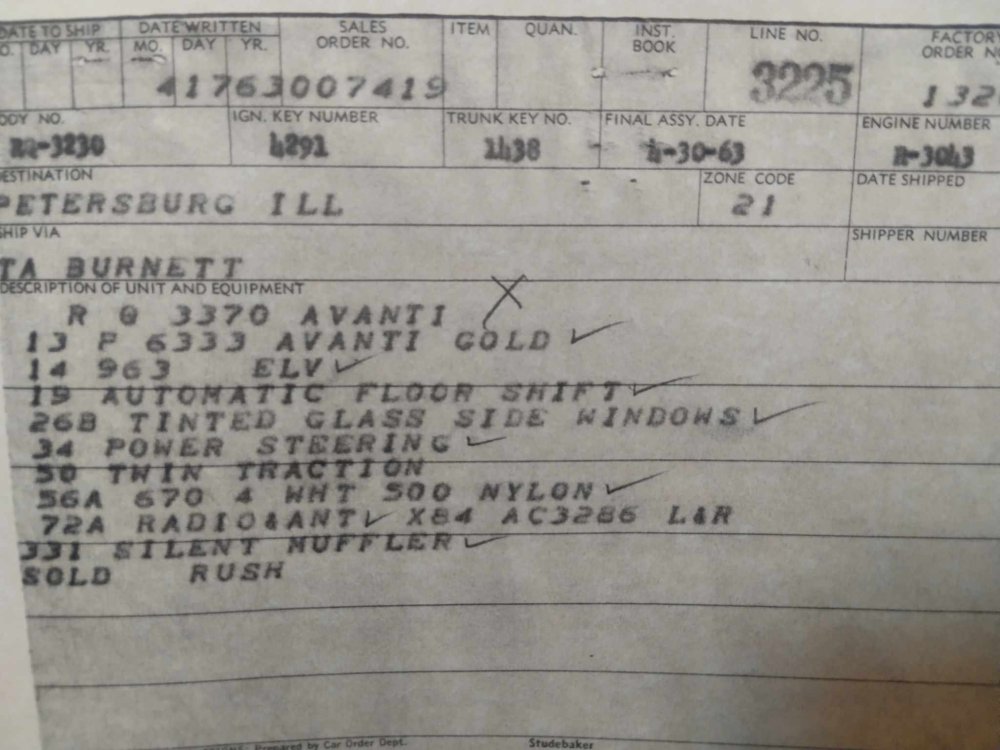
Hogtrough
AOAI Forum Members-
Posts
63 -
Joined
-
Last visited
Content Type
Profiles
Forums
Events
Everything posted by Hogtrough
-
The OEM grille is pretty simple and mine is currently removed while I primer the car. If anyone wants to build one, let me know and I'll supply the measurements. I don't think it is anything more than several straight stainless steel wires cut to particular lengths and mounted to three vertical stainless steel supports. No frame around the outside
-
Hagerty prices look unrealistic at first, at least to me. However, a big factor is that nearly all sellers would pick a condition number one larger than their car would really deserve. A number two car is driven, but otherwise virtually flawless in every way, and a number one car never leaves the trailer. My Avanti recently experienced a condition downgrade when a body shop I left it with parked it outside with the windows down for 2 months, pretty much reversing everything I had done to the interior and ruining what was left of the paint by sanding it. When I'm done redoing it, with new paint and refurbished interior, the car will be a strong number three R1 with air conditioning, putting it at $27,600. Sounds about right.
-
-
I'll take a stab at 63 and 64. R1 needing everything 8K, driveable but needing TLC 12K, nice drivers needing little or no work 20-25K. R2 needing everything 12K, driveable but needing TLC 16K, nice driver needing little or no work 25-30K. I don't know much about the later models. Here is what Hagerty says abouut R1...:
-
Somehow I never saw this response, sorry. Should you (or anyone) still need AC parts, while i've sold everything else, I do still have the compressor and will take $150 plus shipping. Most likely converted to R134 and I have service shop paperwork stating that.
-
Not sure why you would have to bench bleed at this point. Simply keep adding fluid and bleeding each wheel until all the air is out. Make sure your helper understands the pedal must stay down until after you tighten the bleeder. Look at the stream of fluid as it exits. If you see any interruption or hear air, there's your problem
-
Got lucky , it was just this hose leaking air. Disconnected, plugged the port, now stops on a dime again
-
Yesterday I took my '63 around the block and the brakes were alarmingly bad, all the effort I could muster would barely stop the car (it has a Turner front disc kit with a dual master added earlier this year). I assumed I needed a new booster, but now am not so sure. The pedal sinks as normal when starting the car and it feels like it's getting vacuum, but not enough. Was wondering if anyone knows where this hose leads, as I'm thinking it may be the source of a leak. Maybe the dash vacuum gauge? Everything in the engine compartment looks OK. Anyone ever had a booster that went out, but not completely? I was under the impression it was all or nothing.
-
Update: I don't consider the two existing outlets adequate, so I drilled two 2.5" holes in the part of the kick panel facing the back, aligned with the evaporator coil. To trim it out, not being able to find the right size vent outlet, I went to Lowes and got a couple of black plastic "desk grommets" from the drawers in the hardware section. They fit the holes perfectly.
-
Today I charged up the system , ran it for a few minutes and measured the outlet temps at 27 degrees at a fast idle. Success! Then I came in for lunch and remarked to my wife that things were going well...almost TOO well. And I was right. Went out later and started it again. Still cold inside, but went out to check engine temp and it was steaming from the water pump! Shut it down, tightened some loose radiator hose clamps, added lots of water, ran it again and so far things seem to be fine. Coolant will be added later today when a replacement lower radiator hose arrives. I've decided that to take advantage of full airflow, I'm going to bore a couple of 2.5" holes in the front of the carpeted kick pads on each side and put some retro vent balls in. 65 Mustang vents should work. d2843798-e910-427e-8110-465c03d724f1.mp4
-
While fresh on my mind, I decided to write up some instructions on how to do this. You may want to have a shop do the charging part if not experienced with it. Total cost of the system was under $600. If you prefer original components, all the parts I removed are now for sale (edit- SOLD for enough to put a serious dent in the cost of the new system! except for the compressor, still have that for sale, $250) How to install modern air conditioning in a Studebaker Avanti My ’63 R1 came with “factory air” (I put it in quotes because it is not on the production order and I think it was dealer installed- but exactly like factory air). I decided to pull the old parts, sell them to someone who wants authenticity and put in a modern, more reliable system. I noticed after pulling the evaporator that it appeared to be nothing more than an under dash unit from the era adapted to use inside the console. So I decided to adapt a modern system, similar to those found at Vintage Air. You can buy complete kits for a similar price on Amazon on Ebay, but they come with hoses. I elected to have the hoses made up. I found on evaporator on Amazon with very similar dimensions to the old unit and ordered it (about $80). Then I found a larger condenser unit (14 x 20) which is the same size as the Vintage Air unit that came in my Hawk (around $100) . The next major component is the compressor, and that one is easy. A company called Sanden has made many of the compressors found on all kinds of modern vehicles, and it’s known for it’s reliability and efficiency. Not being able to find an actual Sanden 508, I bought a clone from a company called Green that makes compressors for large trucks (around $140) . There are many different similar compressors on Amazon and Ebay, but I opted for the Green due to good reviews. I also purchased a “York to Sanden adapter” which bolts to your old bracket and allows it to accept the new compresser. I then started pulling all the underhood components. First thing to do is pull the fan shroud and radiator, along with the hood. Once these are out of the way your endeavor will be MUCH easier. Here’s what to do: 1). Assuming your car has A/C , remove the alternator, compressor, condenser and evaporator. The plate around the shifter and vertical console panel are removed to get the evaporator out. In addition, you need to cut out one of the vertical fiberglas supports behind the panel, then unhook the hoses and wiring and slide the unit out on the right side. This sounds drastic and at one point I hit the brakes on the project rather than do this. Turns out there was nothing to it, the support is lightweight, easily cut with tin snips and easily replaced with silicone glue . I have no idea how the original designers got i theunit in there, Nostalgic Motors calls for cutting the same piece to get it out. 2) Remove the main bracket from the compressor. You won’t need the idler pulley or bracket. Now bolt the new Sanden type compressor to the adapter bracket with four bolts. Go to the parts store and ask for a 46” belt that is 7/16 wide. Your belt will either be this size or a bit longer, so trial and error will be needed. BE SURE each time you start to bolt in your alternator or compressor that the belt is already on it as you bolt it up. Don’t do what I did and find yourself removing it again and again. With no idler pulley, you must find the right size belt and let it tighten a bit as you tighten the bolts. 3) Remove the front fascia plastic plate with the four vent holes from the evaporator and discard. Now on the upper right and left side of the plastic housing, using an angle grinder trim an area about a half inch deep and 2” long. This will help it clear your vertical supports when installed. You may also have to trim a bit from the back of those fiberglas supports with a Dremel tool or metal shears. Using the supplied steel brackets, make right and left L shaped support brackets and bolt the unit to the original supports. Use the supplied drain line and T to drain the unit from the two drains on each side, T’ing and draining through the original drain hole. The rear of the unit can sit on the shelf in back of it, just make sure the front is high enough so that air exits through the existing vents and water drains rearward as it should. Now take your fan speed control , mount it in the left side of your faceplate and mount the thermostat on the right side. This is reverse of original (due to limited wiring length) so I decided to use the modern plastic escutcheon plates and knobs. You could easily use the original metal knobs if desired as they fit the same. Hook your red power wire to your original power wire and the green compressor wire to the existing wire from your compressor. Using silicone rubber, glue the fiberglas support back in position and you are ready to reassemble the console (or you may want to leave it apart at this point, just in case something in there needs attention). With the evaporator and compressor mounted, time to mount the condenser. Go to the local hardware store and get a pack of four 3” long steel mending plates with holes in them. Mount them to the evap coil, then hold it in front of the radiator and mark holes for mounting. There will be a layer of fiberglas and a layer of steel in the framework you are mounting it to. Be sure the coil is centered in the opening in front of the fan (which does not have to be removed for any of this). You may want to take this opportunity, as I did, to address any issues with the water pump, fan clutch, fuel pump, thermostat, alternator, or any other normally hard to reach parts in the area. It’s also a good time to freshen up the engine compartment with fresh paint if needed, With all the main components mounted, you’ll be needing hoses and a drier (often your evaporator will come with one). I chose to mount mine in the engine compartment instead of the inaccessible area next to the evap coil as the factory did. If available, get a drier with a sight glass. Below are the specs I used to order hoses, except for length. In my case, all but one hose were about 37”. You will want to measure for length yourself because you may elect to mount the drier in a different place. Add an inch or two to each of your measurements. Too long you can deal with, too short means a trip back to the store. Remember that if you use one right angle and one straight end on a hose, no problem, but two right angles and they must be aligned with each other just right for hose installation- they cant be twisted much. So the guy at the hose place is going to ask. The fitting sizes should be the same as mine because these components are pretty much standardized. Take these specs and the hose lengths to a company that makes refrigeration hoses. Most large cities will have one. Or, you can buy kits online to make them up yourself, but they require a special tool to crimp the ends. I decided to leave it to the experts All distances are visible rubber only. All fittings O ring type #6- Liquid line- Drier (smaller sample fitting) to bottom of condenser ( smaller sample fitting) : Straight on compressor end, 90 degree condenser end # 6 liquid line- drier - straight fitting (see smaller sample fitting) to evaporator (larger sample fitting) -90 degree #10 suction hose- compressor (7/8-14) fitting straight with charging port, evap fitting 90 degree (see old large sample- O ring, NOT flare fitting) # 8 discharge hose- compressor (3/4-16) with charging port, to condenser top (see larger sample fitting ) - 90 degrees both ends . Time to install the hoses. Use the provided illustration to install each hose in the proper location. Lubricate the O ring and tighten each fitting sufficiently. Torque specs are given for this, but I’m not sure how you put a torque wrench on a hose fitting, so I did it by feel. Remember that if not tightened enough, it may well leak. Now go to one of the parts stores and “rent” a vacuum pump if you don’t own one. These companies will let you use many tools overnight for free, refunding your money when you bring it back. Vacuum pumps are one of those tools, and are quite expensive to buy. You’ll also need a set of HVAC gauges, available at Harbor Freight. Find one of the many Youtube videos about charging a car AC system and it will help you with this part. First you will want to pull a vacuum on the system for a half hour or so and make sure it is tight. Close the valve on your gauge and wait. If vacuum holds an hour or so, you should be good (I let it sit overnight to be sure). These particular systems require about 28 ounces of freon, which you can get at your local parts store and add just like you would to any car- just make sure the system has been vacuumed down before. Add 12 ounces in liquid form with engine off, then turn can right side up and add the rest with engine running. Sitting the can in a pan of hot water will speed things up. The pressure switch installed on your drier and in series with the clutch power wire should supply power to the compressor once the initial liquid charge is added. NEVER open the red (high side) valve on the gauges, only the blue (low side) valve. After charging the system and enjoying that stream of ice cold air, you can reinstall the kick panels and console. A bit of trimming may be required in the driver side kick panel, in the back as I recall.
-
I researched them earlier today - scammers. Hopefully you didn't buy anything.
-
It has heat capability, but I'm sticking with the OEM heater for now. Should the core leak or motor quit, it will be easy to switch over. No wiring diagram with it but the Amazon listing had all that info posted. Pretty simple: red wire (fused) to power, green wire to compressor, black to ground.
-
Some of you have been following along as I removed the existing OEM A/C system from my '63 R1 and replaced it with new. For those who prefer original, here you go- it's all for sale. Evaporator unit (inside console), compressor and condenser. Here's what I know about it: 1) The whole system was recharged and operational in 2005 when a major mechanical restoration was done. 2) Before removing, I applied power to the clutch, verifying it to operate, and let the compressor run a few seconds (no freon in the system). The compressor pumped up the system, and when I disconnected the lines an hour later it was still holding. The compressor is a York type, rebuilt in the 90's by Everco. 3) I applied power to the blower motor and verified it to run quietly. I'm not able to test the expansion valve. 4) The condenser includes the drier, which will need to be replaced like any used one should be. Components sold as is. $250 each or $650 for all 3. Buy them all and I'll throw in the old hoses which you can use for patterns. Get them while you can, - if a vendor ever gets these in stock, he will want several times as much!
-
This is the particular unit, however, you can find it for various prices on both Ebay and Amazon. https://www.amazon.com/dp/B0CM8P3RMF?ref=ppx_yo2ov_dt_b_fed_asin_title It is basically the same unit you would buy from Vintage Air for say $450 to put factory type A/C in your street rod , way up under the dash, and run hoses to the vents. I just removed the front faceplate where the hoses attach. You then drill a hole in your dash for each control. I just drilled out the holes in the stock faceplate to fit the controls. I also have a compressor and condenser/drier on the way and so far have a total of about $330 in the system. Of course at that price I'm dealing with Chinese components, which is why I check out reviews first. I'll still need some misc parts like custom hoses, which I'll probably have made up by a shop in Nashville that specializes in that. Vintage air probably gets $2200 for a similar setup. I imagine the old parts will sell for enough to easily cover my conversion, and I won't have to find surplus R12 at $40 a can!
-
Decided I would rather have all new components than mess with the old ones. There are lots of underdash kits on Ebay and Amazon that will work, but I decided to buy the parts piecemeal so I can research each one and check out reviews. So far I've gotten the evaporator . I noticed when I removed the old one that it looked VERY similar to an underdash unit of the time. Then I saw that underdash units had really not changed much in the last 50 years- dimensions are about the same. So I put two and two together and decided I would try to retrofit the new one in place of the old (which I will be selling along with all the other parts I remove). I followed Nostalgic's instructions on removing the old one and determined where I would have to trim the plastic evaporator cabinet and the fiberglas Avanti console to make it work. Pretty minimal work needed . I was even able to replace the old controls with new. Could have retained the old knobs but due to the length of wire provided, they would have had to have been reversed right and left, so I fitted the new ones. Next step is underhood, where I will use a York to Sanden adapter to fit a new modern compressor and swap out the existing 20 X 16 condensor with integrated drier for a new 20 x 14 with separate drier.
-
Just curious- can you pull that unit by just removing some screws and removing it from the RH side, or is there more to it?
-
Had mine ready, drove to the show, decided to check it out first. Sparse attendance, obnoxious music, only 4 or 5 cars of interest. Not worth the $20 fee, on to the next. I can rattle off the Avanti story with the best of them!
-
Looks like you can buy the replacement on Ebay, not as expensive as I thought. Happen to know what size the charge is?
-
I paid up for a used replacement from a well known vendor and got one that doesn't have chrome as nice as this one does. This bumper is for the guy looking for an inexpensive one for a nice driver- it has an area by the passenger side bracket that has a ripple. If you have hammer and dolly skills you can probably make it near perfect, except for the tiny rub on the chrome seen in the photo. Glad to take more photos of certain areas as requested. $175 plus actual shipping, which won't be too bad, they are very light.
-
So can I assume that since there are screw on connectors that it was never converted and the R134A note on the invoice was an error? Are there any economical replacement refrigerants for R12? Don't want to invest too much, not knowing if the existing system will even function. Might make more sense to install a modern compressor, etc.
-
1) Today I got the production order for my 63 R1 (4223) and air conditioning was missing from the option list. I assume this means it was dealer installed later? 2) Found an embossed aluminum tag in the glovebox that was at some point installed under the hood (I assume) with "Studebaker Air Conditioning" and info about the system. Where would it have been installed? 3) When I was a teenager in the 70's, if I got a car that with air that wasn't working or out of freon, I would simply pump down the system with a vacuum pump (maybe replacing the receiver/drier), recharge the system and usually that got it working. Any reason that won't work today, assuming I can find refrigerant? 4) Does the Avanti AC system have a pressure switch to keep the compressor from running if there is no freon? 5) How can I tell if the system has been converted over to R134A? (a service invoice from 2005 says that they added R134A to the system at that time)
-
All brake parts except for shoes are new, and the shoes look recently replaced. I tried slamming on the brakes in a parking lot and looked at the tire stipes. The left rear was nowhere near as strong, barely there. So I'll try re adjusting it.

